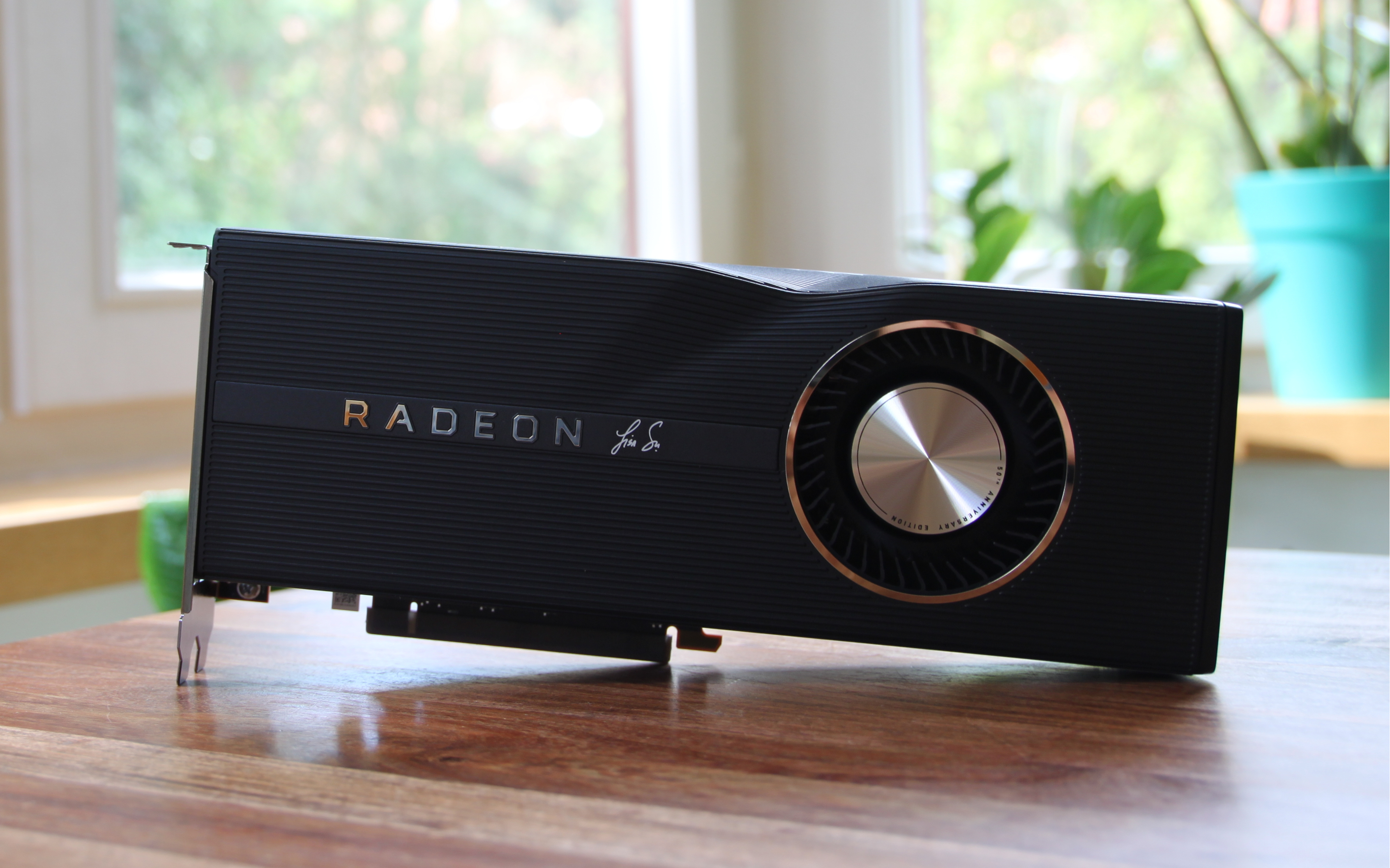Nvidia GeForce RTX 3080 could face a serious threat from AMD — here's the proof
AMD Big Navi performance leak teases a GeForce RTX-killing graphics card

AMD’s next high-end graphics card, currently known as Big Navi, could be up to 50 percent faster than Nvidia’s GeForce RTX 2080 Ti and could challenge the upcoming GeForce RTX 3080.
YouTube channel Moore’s Law is Dead has uncovered information that claims a Big Navi GPU will deliver 40 to 50 percent more performance over a GeForce RTX 2080 ti, Nvidia’s current top-end graphics card. And Moore’s Law is Dead said the source of such a claim comes from “somebody who’s been right before several times," but one should still take it with a grain of salt.
- The best gaming PCs you can buy now
- Microsoft Edge just got a killer feature to beat Chrome — try it now
- Just in: Nvidia GeForce RTX 3080 may require this big PC upgrade
The Big Navi graphics card, according to the leaked information, will also come with two clusters of compute units measuring in at 36CUs each. A total of 72CUs translates to 4,608 stream processors, which when combined with a 384-bit bus, GDDR6 video memory, and a maximum clock speed of 2,510MHz, could see Big Navi trounce the GeForce RTX 2080 Ti.
For reference, the RTX 2080 Ti comes with 4,352 CUDA cores, a 352-bit bus, uses GDDR6, and runs up to 1,545MHz. It’s a mighty graphics card but it would appear Big Navi could have it on the ropes.
AMD Big Navi vs Nvidia RTX 3080
The GeForce RTX 3080, thought to be the next high-end graphics card from Nvidia, is set to deliver up to 30 percent more performance than the RTX 2080 Ti Founder's Edition. So if Big Navi could be up to 50 percent faster than the RTX 2080, there’s a chance it could snap at the heels of the RTX 3080.
Big Navi will use AMD’s next-generation RDNA 2 graphics architecture, which promises a boost over the already capable RDNA core architecture found in the Radeon RX 5700 XT. The GeForce RTX 3080 will use Nvidia’s new Ampere graphics architecture, which promises boosted performance and improved ray-tracing capabilities.
So both upcoming GPUs, slated for a release around September time, will have new graphics foundations to tap into. And that’ll likely be what determines which comes out on top, as specs are one thing but how they’re brought to bear in games and rendering tasks is another.
Sign up to get the BEST of Tom's Guide direct to your inbox.
Get instant access to breaking news, the hottest reviews, great deals and helpful tips.
AMD has gone some way to improving the efficiency and performance of its graphics cards, having moved from its Graphics Core Next architecture to RDNA. Clearly it’s impressed the likes of Sony and Microsoft, who’ve both opted for an RDNA 2-based GPU in their respective PS5 and Xbox Series X consoles.
GCN-based Radeon graphics cards tend to get beaten by equivalent Nvidia GPUs. But the newer RDNA Radeon models can hold their own against all but Nvidia’s most-powerful graphic cards, albeit without offering ray-tracing hardware.
But Big Navi could change all that. If it launches ahead of the next-generation Ampere GeForce cards it could steal a lot of Nvidia’s thunder. Even if it doesn’t, AMD will have a high-end graphics card to bring to the GPU arena.
And that means more competition, which means better graphics cards at more competitive prices for PC gaming enthusiasts. While the next-generation consoles will dominate discourse around gaming in the second half of the year, PC gamers still have a lot to look forward to as the fall creeps closer.
Roland Moore-Colyer a Managing Editor at Tom’s Guide with a focus on news, features and opinion articles. He often writes about gaming, phones, laptops and other bits of hardware; he’s also got an interest in cars. When not at his desk Roland can be found wandering around London, often with a look of curiosity on his face.


